
cd_nom

| Author : G. Arber |
 |
To get the picture, please visit:
Gilles Arber
email : inpn@mnhn.fr
Despite the Creative Commons license, please inform the author of the use which will be made of his photo

| Author : J. Touroult |
 |
To get the picture, please visit:
Julien Touroult
UMS PatriNat AFB - CNRS - MNHN
Muséum national d'Histoire naturelle, CP41, 36 rue Geoffroy Saint-Hilaire, 75005 Paris
Despite the Creative Commons license, please inform the author of the use which will be made of his photo

| Author : J. Touroult |
 |
To get the picture, please visit:
Despite the Creative Commons license, please inform the author of the use which will be made of his photo
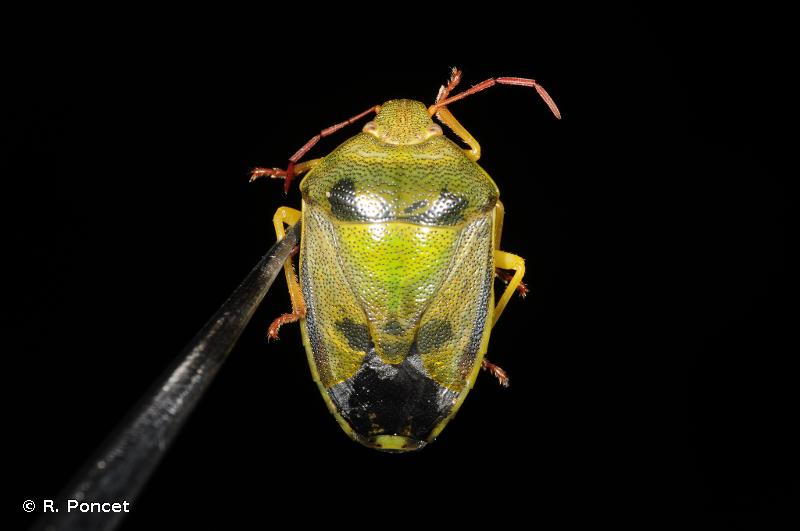
| Author : R. Poncet |
 |
To get the picture, please visit:
Rémy Poncet<br>Muséum national d'Histoire naturelle - PatriNat<br>36 rue Geoffroy Saint-Hilaire CP 41<br>75 231 PARIS CEDEX 05<br>e-mail : inpn@mnhn.fr
Despite the Creative Commons license, please inform the author of the use which will be made of his photo
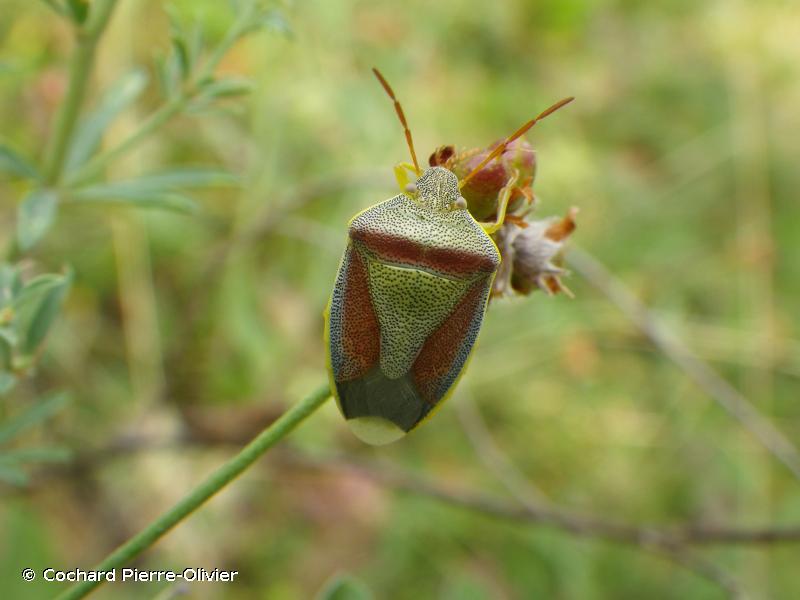
| Author : Cochard Pierre-Olivier |
 |
Despite the Creative Commons license, please inform the author of the use which will be made of his photo
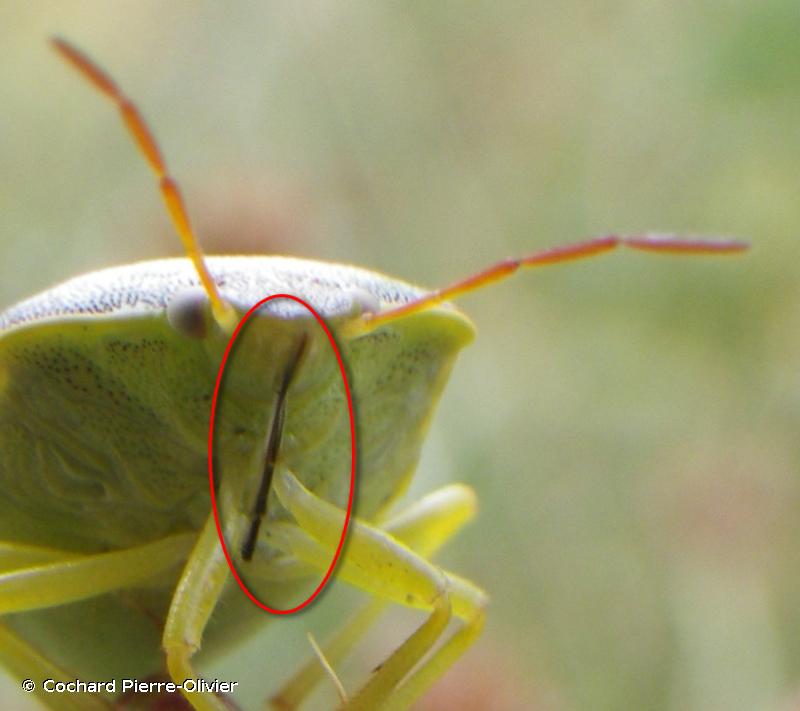
| Author : Cochard Pierre-Olivier |
 |
Despite the Creative Commons license, please inform the author of the use which will be made of his photo
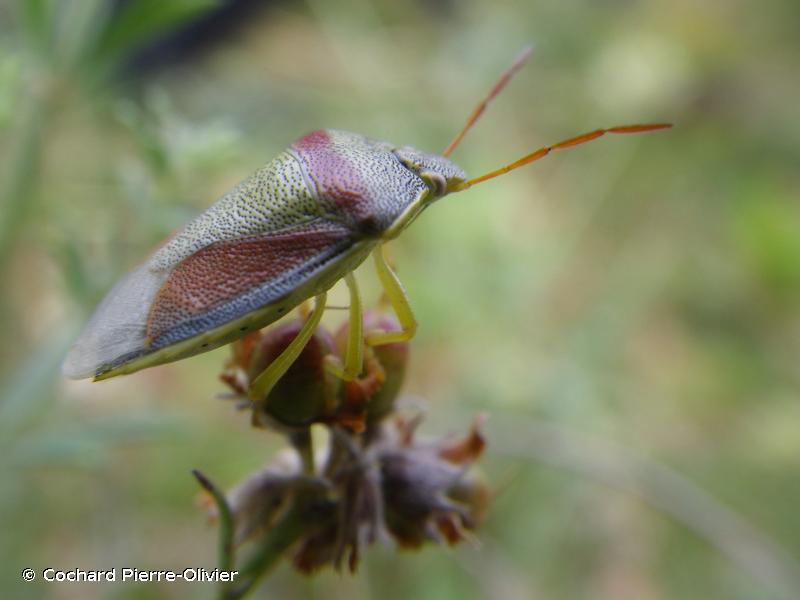
| Author : Cochard Pierre-Olivier |
 |
Despite the Creative Commons license, please inform the author of the use which will be made of his photo
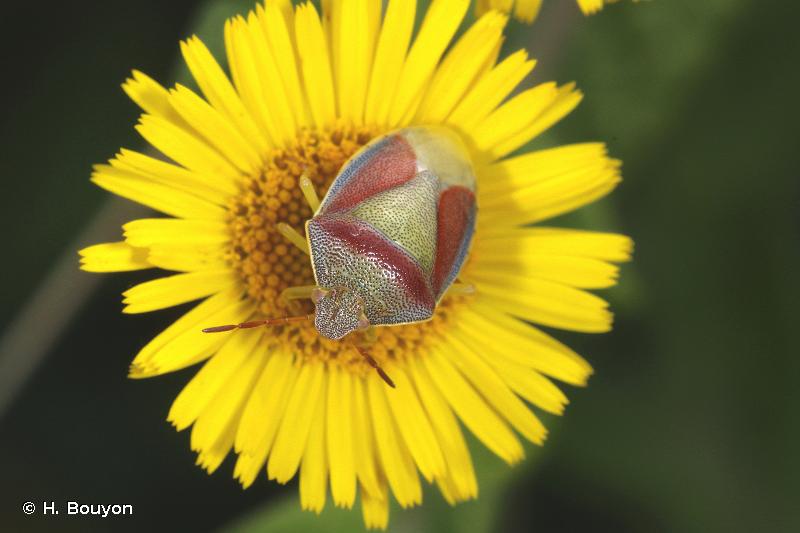
| Author : H. Bouyon |
 |
To get the picture, please visit:
Any reuse of one or more photographs on this site is subject to an authorization request from the author.
Link to the Code of Intellectual Property (Legifrance)

| Author : R. Poncet |
 |
To get the picture, please visit:
Rémy Poncet<br>Muséum national d'Histoire naturelle - PatriNat<br>36 rue Geoffroy Saint-Hilaire CP 41<br>75 231 PARIS CEDEX 05<br>e-mail : inpn@mnhn.fr
Despite the Creative Commons license, please inform the author of the use which will be made of his photo
Taille : 10 – 12,5 mm
Diagnose :Punaise verdâtre ou jaunâtre sur sa face dorsale avec une ponctuation noire dense. Ailes antérieures (cories) et partie postérieure du pronotum parfois rougeâtre chez les adultes immatures. Bords des cories (exocories) de couleur bleue ou grisâtre toujours d'une couleur différente du reste de la corie. Abdomen noir visible à travers la membrane transparente des ailes.
Détermination : Simple.
Espèces proches :La ponctuation noire, le rebord coloré des cories, l'absence de tache claire sur l'apex du scutellum, la membrane transparente et la présence d'une forte épine dirigée vers l'avant sur le 3e segment abdominal ventral permettent de la séparer à l'œil nu des autres punaises vertes (Acrosternum, Brachynema, Chlorochroa, Nezara, Palomena).
Période d'observation : Mars à novembre avec un pic principal en juin.
Biologie-éthologie :Elle s'alimente principalement sur des espèces de légumineuses arbustives (Fabaceae) comme les ajoncs, cytises, genêts, spartiers dont elle pique les fruits le plus souvent à travers leurs gousses encore vertes. Elle a aussi été observée sur la luzerne. C'est une espèce précoce, sortant d'hivernation dès les premières journées ensoleillées de mars.
Biogéographie et écologie :Espèce eurosibérienne rencontrée jusqu'à l'ouest de la Chine, présente aussi dans le Maghreb et le Moyen-Orient, elle atteint 60° de latitude nord et vit jusqu'à 1 700 m d'altitude. Elle est présente dans les habitats où on trouve des essences ligneuses : landes à bruyères, lisières forestières, garrigues, friches envahies de ronciers et de genêts, prairies subalpines à rhododendrons, tourbières et marais. C'est une espèce très commune, aussi bien en milieu méditerranéen qu'ailleurs.
Roland Lupoli (),2019
Continental
Metropolitan France
Overseas
Marine
Metropolitan France
Overseas
The map presents a summary at the 10 x 10 km grid of the observation data for the species transmitted to the SINP. These data have been subjected to validation filters.
The map presents a reference distribution layer of the species at the scale of departments and marine sectors. The presence and absence data were established by expertise within a network of partners. This reference distribution is used in the validation process of the SINP data at the INPN level.
Corresponds to a report on the basis of at least one observation proved within a period of 10 years (20 years for little-known invertebrates) preceding the year and no presumption of extinction since obtaining the last data nor doubt on reproductive and implemented nature of this population. For migratory species, the presence indicated concerns areas of reproduction.
This status is based on one or more of the following criteria:
This point covers the absence, more difficult by nature to demonstrate than presence. This status is based on one or more of the following criteria:
This status must be assigned to a department in which the presence of the species is casual.
Particular case of absence due to a proven extinction less than a half century ago (older disappearances are treated as "no probable or definite").
In the state of knowledge, we can not comment on the presence or absence in the current department. This is the default status when not comprised in one of the previous categories or whenever there is doubt.
The map shows the global distribution of the species based on GBIF data (Global Biodiversity Information Facility).
